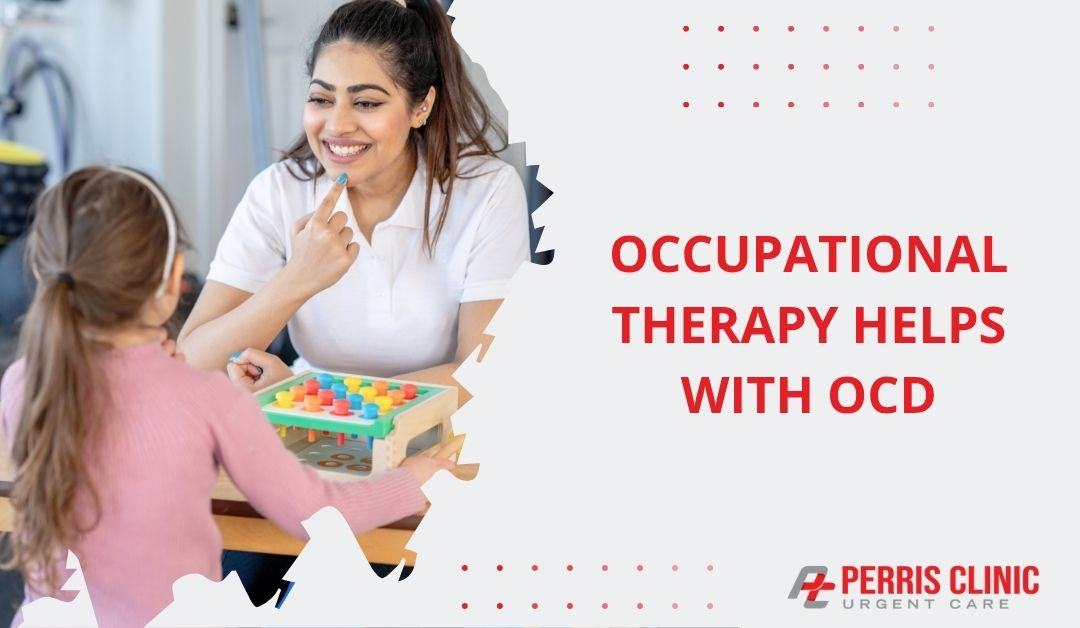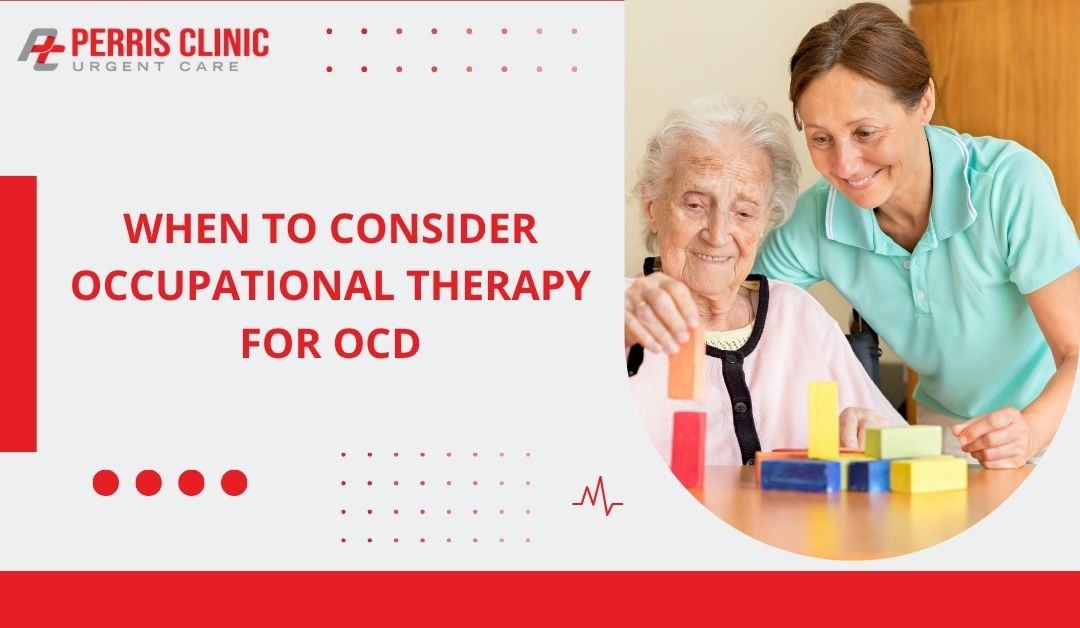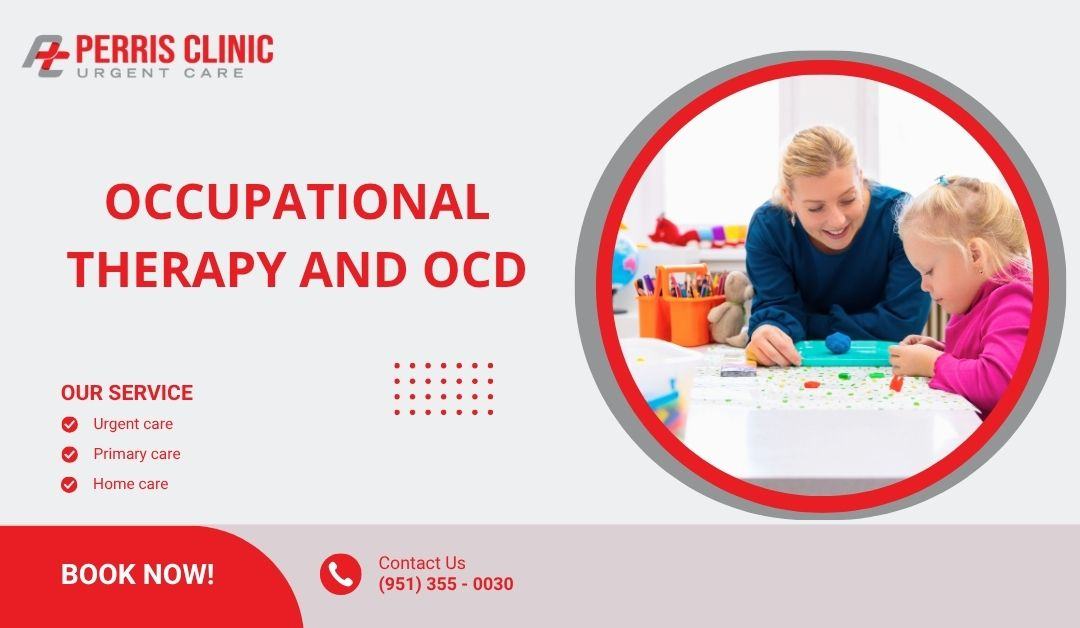Occupational therapy and OCD are closely linked when daily life starts to feel hard or out of control. OCD can do more than just cause stress. It often makes it difficult to get dressed, leave the house, or focus on school or work. Occupational therapy helps children, teens, and adults develop simple habits and establish calm, routine-based lifestyles.
It can also lower stress and enhance their ability to cope throughout the day. OT examines real-life experiences, including how you move, act, and take care of yourself. In this blog, we’ll demonstrate how OT helps individuals with OCD lead better lives and feel more in control.
What Is Occupational Therapy and Who Is It For?
Occupational therapy (OT) helps individuals enhance their ability to perform daily tasks. It is not only for physical injuries. OT also supports mental health conditions like OCD. The goal is to make daily life easier and less stressful. Occupational therapists work with children, teens, and adults. They focus on helping each person live better by improving everyday skills and habits.
How Occupational Therapy Works
Occupational therapists examine how OCD impacts daily life. They help people establish routines and habits that cater to their needs. For example, if OCD makes getting dressed hard, the therapist breaks the task into small steps. This way, the person can complete the task without feeling overwhelmed. Therapists also teach coping skills to manage anxiety and stress caused by OCD.
Who Can Benefit from Occupational Therapy for OCD?
Anyone with OCD can benefit from OT. Children and teenagers often require assistance in managing their schoolwork and daily self-care. Adults may struggle with work tasks or home routines. Occupational therapy focuses on helping each person face these challenges. Family members can also learn ways to better support their loved ones.
How OCD Disrupts Everyday Life
OCD can make routine daily tasks feel very hard. It often causes people to repeat actions or avoid certain things. These behaviors take time and energy. As a result, simple routines become stressful and confusing. OCD doesn’t just affect thoughts; it affects how people live their day.
Common Ways OCD Affects Daily Life
Many people with OCD struggle with morning routines. They may spend a long time washing their hands or checking if the door is locked. These actions delay getting ready and can cause frustration. OCD can also make it hard to focus at school or work. Sometimes, people avoid social events because they worry about their rituals or fears.
Sensory Issues and Anxiety
Some people with OCD have sensory sensitivities. Certain sounds, smells, or touches may feel overwhelming. This adds to their anxiety and makes daily tasks even harder. Occupational therapists help by using sensory strategies to reduce this stress.
The Impact on Independence
OCD can impact self-care, such as dressing, cooking, or cleaning. When these become difficult, people may feel less independent. This can lower their confidence and make daily life feel overwhelming. Occupational therapy helps rebuild these skills, enabling individuals to manage their daily routines more effectively.
How Occupational Therapy Helps with OCD
Occupational therapy helps people with OCD manage their daily lives better. It focuses on real tasks, like getting dressed, cooking, or going to work. Instead of just treating thoughts, OT helps change how people handle routines and stress. This support makes everyday life easier and less tiring.

Building Structure and Breaking Tasks Down
One way occupational therapists help is by breaking big tasks into smaller steps. For example, if someone finds it difficult to clean their room due to OCD, the therapist helps create a simple plan. This makes the task less scary and easier to finish. Having a clear structure can help reduce anxiety and prevent feelings of being stuck.
Creating Supportive Environments
Occupational therapists also help people change their surroundings. They may suggest organizing spaces to make routines smoother or reduce triggers that cause OCD behaviors. This can include using visual schedules or checklists to keep track of daily tasks.
Teaching Coping Skills
OT teaches ways to handle stress and manage compulsions. Therapists use calming techniques and sensory tools, like deep pressure or movement breaks, to ease anxiety. These methods help people feel more in control when OCD thoughts become strong.
Discover the advantages and disadvantages of occupational therapy to see if it’s right for you.
Standard OT Techniques for OCD
Occupational therapists use many techniques to help people with OCD. These methods focus on making daily tasks easier and lowering anxiety. Each plan is tailored to meet the individual’s needs. Therapists utilize a range of tools and skills to support individuals in their daily lives.
Activity Scheduling and Visual Tools
Therapists often use activity schedules to bring structure. These schedules outline the tasks and their corresponding deadlines. Visual checklists and timers help keep track of tasks. These tools help reduce the feeling of being overwhelmed and build good habits.
Step-by-Step Task Planning
Breaking tasks into small steps makes them easier to manage. For example, a therapist may help someone break down cleaning tasks into manageable parts, such as picking up clothes first and then making the bed. This approach makes large chores less stressful.
Calming and Sensory Strategies
OCD can cause intense anxiety. Therapists teach calming techniques, like deep breathing or movement breaks. Sensory tools, such as weighted blankets or stress balls, help some people stay calm. These methods reduce tension and make routines smoother.
Practical Exposure Through Daily Activities
While OT is not the same as exposure therapy (ERP), therapists guide people gently through everyday challenges. Doing feared tasks with support helps reduce stress over time. This practical help builds confidence in daily life.
OT vs. Traditional Therapy for OCD: What’s the Difference?
Occupational therapy (OT) and traditional therapies like Cognitive Behavioral Therapy (CBT) both help people with OCD. But they focus on different parts of the problem. Understanding how they work can help individuals access the proper support.
What Traditional Therapy Does
Traditional therapy, like CBT and Exposure and Response Prevention (ERP), focuses on changing the thoughts and fears that cause OCD. These therapies teach people how to face their fears and reduce compulsions. They work directly on the mental side of OCD.
How Occupational Therapy Supports Daily Life
Occupational therapy examines how OCD impacts everyday activities. It helps people improve their ability to perform tasks such as cooking, cleaning, or getting ready for work. OT focuses on building routines and managing anxiety in real situations.
How They Work Together
OT and traditional therapy often work best when combined. While CBT changes how people think about OCD, OT helps them put new skills into action every day. This teamwork provides a more comprehensive approach to managing OCD.
What to Expect in OT Sessions for OCD
Occupational therapy sessions help people learn skills to manage OCD in daily life. Each session focuses on practical support and building routines. The therapist works closely with the person to set goals and practice tasks.
Setting Goals Together
Initially, the occupational therapist discusses the person’s challenges with them. Together, they choose goals that feel important and achievable. Goals include improving morning routines, managing stress more effectively, and handling school or work tasks more efficiently.
Hands-On Practice
OT sessions often include practicing real-life tasks. The therapist guides the person step by step, helping them try new ways to complete chores or manage self-care. This hands-on support helps build confidence and reduce stress.
Family and Caregiver Involvement
For children or teens, therapists may involve parents or caregivers in the treatment process. They teach ways to support routines at home. This helps make progress steady and lasting.
Regular Review and Adjustments
Therapists check progress often. If a method isn’t working, they adjust the plan. This keeps therapy helpful and tailored to each person’s needs.
Real-Life Examples: How OT Makes a Difference
Occupational therapy can change how people live with OCD. Many find that OT helps them do things they once thought were impossible. Here are some simple examples to illustrate how therapy supports real-life situations.
Helping Kids Manage School and Self-Care
One child with OCD struggled to get ready for school. The therapist worked with the child and parents to build a step-by-step morning routine. They used checklists and timers to keep the child on track. After a few weeks, mornings became less stressful, and the child arrived on time more often.
Visit our post to learn what an occupational therapist does for a child, helping improve daily skills and supporting healthy growth and development.
Supporting Adults at Work and Home
An adult with OCD had trouble focusing at work because of repeated checking. The occupational therapist helped create a plan to break tasks into smaller parts and use calming tools during breaks. This approach helped the person stay productive and feel less anxious.
Visit our post to learn the top reasons adults are referred to occupational therapy and how it can help improve daily life and independence.
Building Confidence and Independence
In both cases, therapy helped people feel more in control of their daily lives. They learned skills to manage stress and build routines that work for them. These changes often lead to better confidence and more independence.
When to Consider Occupational Therapy for OCD
Deciding when to try occupational therapy can be an essential step. OT helps when OCD starts to make daily life more difficult or stressful. Knowing the signs can help people get support sooner.

Signs That OT Can Help
If OCD gets in the way of simple tasks like dressing, cooking, or leaving the house, occupational therapy may help. When routines feel overwhelming or take too long, it’s a good idea to reach out for help. People who experience anxiety during daily activities or struggle with focus can also benefit.
Who Benefits Most from OT?
Occupational therapy supports people of all ages. Children may need help with school routines and self-care. Teens often face challenges balancing OCD with social life and studies. Adults may struggle with work, home tasks, or family duties. OT provides tools and skills for all these areas.
How to Get Started
If you think OT could help, talk to your doctor or mental health provider. They can recommend an occupational therapist. Many therapists work closely with doctors to create personalized plans tailored to each individual’s specific needs.
How Perris Clinic Supports People with OCD
Perris Clinic offers specialized occupational therapy for people with OCD. Their therapists understand the daily challenges OCD creates. They work closely with clients to build routines, manage anxiety, and improve daily skills.
Expert Therapists Who Understand OCD
The clinic has licensed occupational therapists trained in helping people with mental health issues like OCD. They create personalized plans based on each person’s needs and goals. This care allows clients to feel supported and understood.
Practical Support for Daily Life
Perris Clinic focuses on real-world solutions. Therapists help clients improve morning routines, work tasks, and self-care. They also teach calming techniques and sensory tools to reduce stress.
A Team Approach
Perris Clinic works with doctors, counselors, and families. This teamwork creates a complete support system for clients. It helps make therapy more effective and long-lasting.
Contact Perris Clinic Today
If OCD makes daily life hard, Perris Clinic can help. Reach out to discover how occupational therapy enables you to live better and manage challenges every day.
Frequently Asked Questions (FAQs)
What is occupational therapy for OCD?
Occupational therapy helps people with OCD manage daily tasks and build routines. It focuses on improving how someone lives, work, and care for themselves.
Who can benefit from OT for OCD?
Children, teens, and adults with OCD can benefit. OT supports school, work, and home routines that OCD may disrupt.
How is OT different from traditional OCD therapy?
Traditional therapy focuses on changing thoughts and fears. OT focuses on daily life skills and managing routines.
What techniques do occupational therapists use for OCD?
They use activity schedules, step-by-step task planning, calming strategies, and sensory tools to reduce anxiety and improve function.
How do I get started with occupational therapy?
Talk to your doctor or mental health provider. They can recommend an occupational therapist who works with OCD.
Conclusion
Occupational therapy and OCD work together to make daily life easier. When OCD causes stress or blocks simple tasks, occupational therapy helps build new routines and coping skills. This support enables people to manage their day with greater confidence and less worry.
Whether you’re a child, teen, or adult, OT can help you face everyday challenges. If OCD affects your daily routine, consider reaching out to a licensed occupational therapist. Getting help early can make a big difference.

